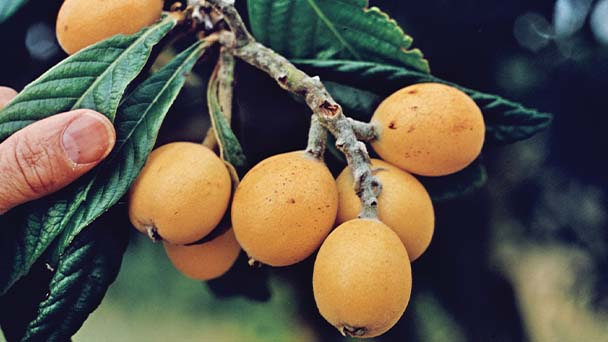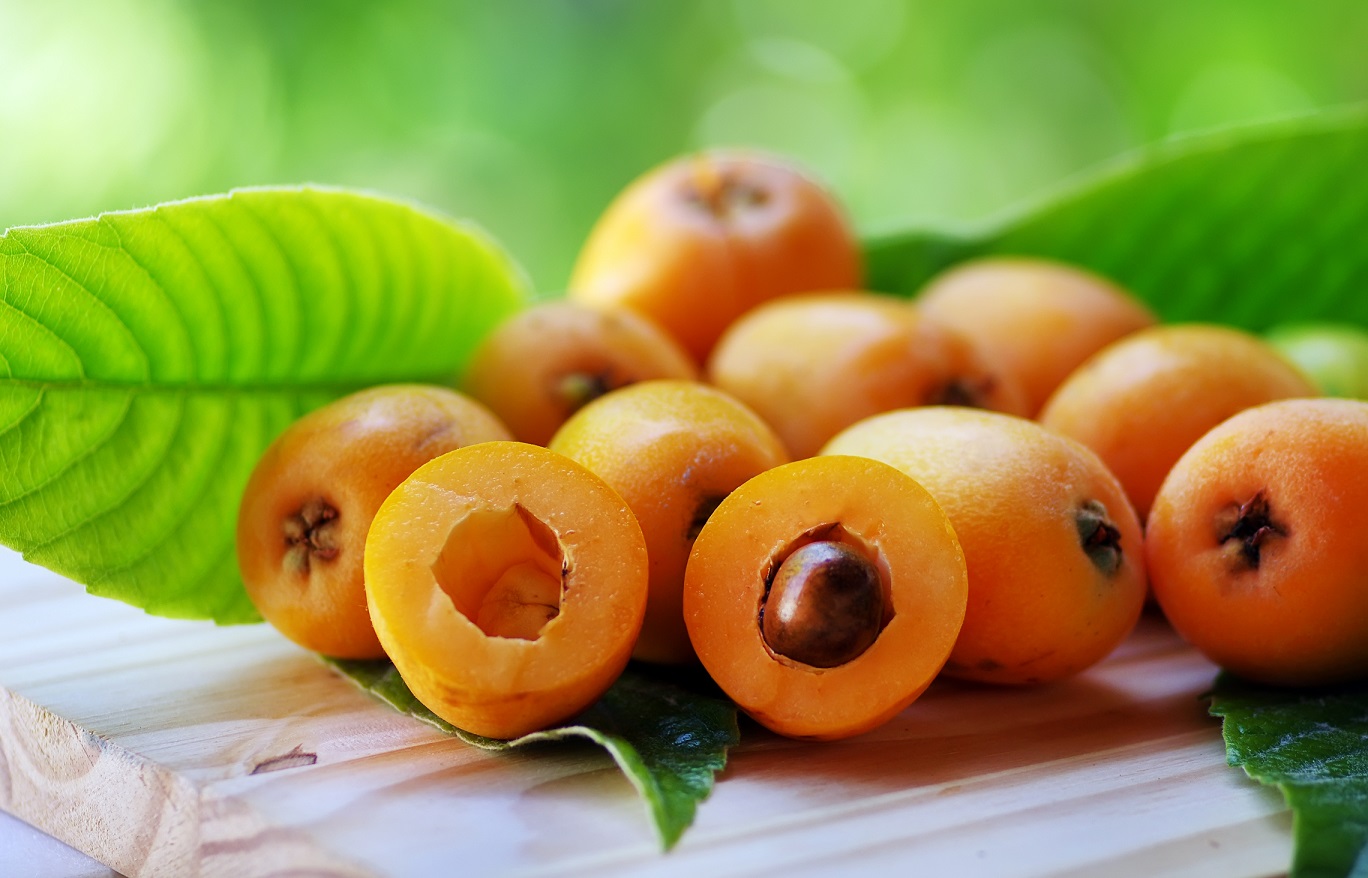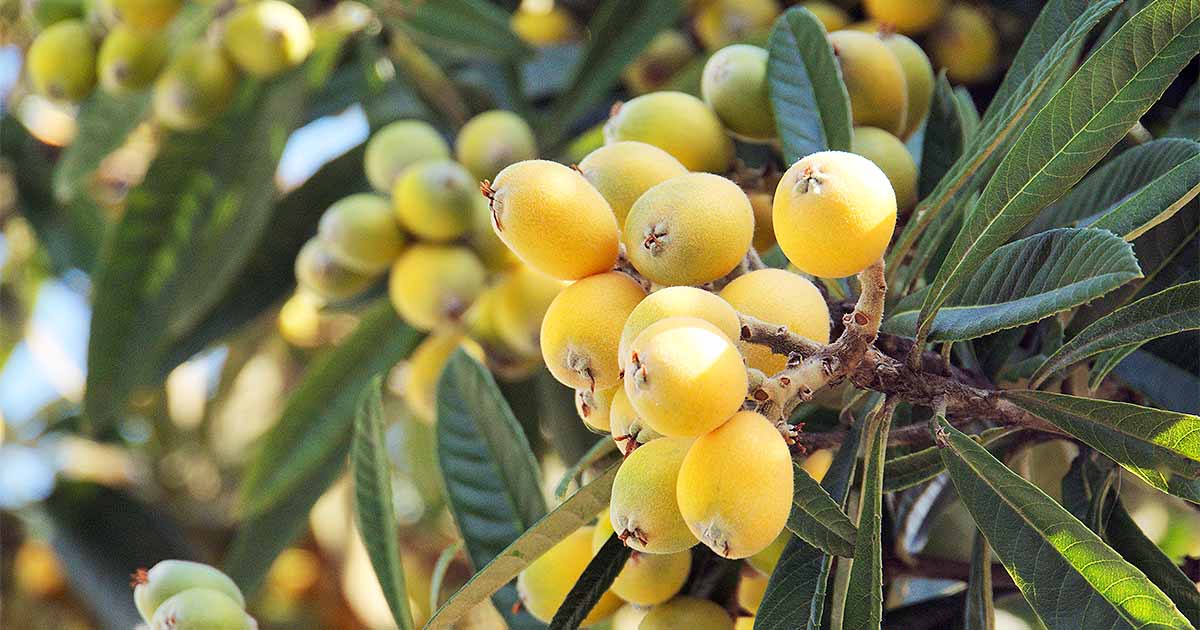Loquat Profile
Written by Joy
Sep 27 2020

Loquat is a plant of the Rosaceae family. The height of the tree is 3~5 meters, the leaves are big and long, thick and hairy, and are oblong, like a lute. Loquat is different from most fruit trees. It blooms in autumn or early winter, and the fruit matures from spring to early summer, earlier than other fruits. The loquat flower is white or light yellow, with five petals, about 2 cm in diameter, and five to ten flowers in a bunch, which can be used as a nectar crop.
Apply to cough2. Fertilizer and water promote the differentiation of flower buds3. Use regulators to promote and control flower bud differentiation
Loquat morphological characteristics
The fruit is spherical or oblong, 2~5 cm in diameter, yellow or orange with rusty pilose outside, which will fall off soon. Flowering from October to December, fruiting from May to June.Ripe loquat fruits are also hung on the tree in bunches, each of which is 3 to 5 cm long, in a round, oval. The surface of loquat is fluffy, green when immature, hard and firm, with a strong aromatic odor. After maturity, the outer skin is generally light yellow, and some are darker, close to orange-red. The flesh is soft and juicy, and it can be divided into white and orange. The white sand is sweet and the fruit is small. The red sand is more sour or quite sour, and is relatively large. Each loquat fruit has five ovaries, one to five of which develop into brown seeds, while the artificially developed seedless varieties have no seeds.
Loquat growth habit and growing environment and distribution
It is produced in Gansu, Shaanxi, Henan, Jiangsu, Anhui, Zhejiang, Jiangxi, Hubei, Hunan, Sichuan, Yunnan, Guizhou, Guangxi, Guangdong, Fujian, Taiwan. It is cultivated everywhere, and there are wild ones in Sichuan and Hubei. It is also cultivated in Japan, India, Vietnam, Myanmar, Thailand, and Indonesia.

Loquat is a subtropical evergreen fruit tree. Loquat likes light and is slightly tolerant to shade. It likes a warm climate and a well-drained soil with fertility and water. It is most resistant to stagnant water and is slightly hardy and intolerant to severe cold. The root system of loquat is shallow and narrow, and it is prone to drought and torn down by strong winds. The soil pH is 6 is the most suitable. Shooting in the four seasons, root growth and shoot growth are alternate, generally roots are two weeks earlier than the shoots. There are four peaks of root growth in a year. The flower bud differentiation period of loquat is about June to July. The most abundant element in loquat body is calcium, followed by potassium, nitrogen, and magnesium. The demand for boron and zinc is also relatively high. It is recommended to sprinkle micro-replenishment, calcium, magnesium, boron, and zinc in the flower bud differentiation stage, young fruit stage, fruit expansion stage, color change stage, and fruit picking. Fertilization promotes the expansion of the fruit evenly. The fruit is large, the color is beautiful, and the appearance is good.
Loquat efficacy and role
Fruit is sweet and sour, flat in nature. Core is bitter in taste, flat in nature, and it can enter the lung and stomach meridian.It is mainly used to treat cough, chronic cough, dry throat, thirst and lack of gas.
Apply to cough
You can choose 9-15 grams Loquat core to smash, adding 3 slices of ginger, and you ought to remove scum and have it once in the morning and evening.Loquat cultivation
1. Ring cutting, pulling branches, and lightly breaking branches is proper to promote the differentiation of flower buds.
In late June, you'd better cut 2 to 3 rounds on the main trunk. You can use 50% thiophanate wettable powder 50 times solution to apply to the wound to prevent pathogen infection. From June to July, it’s a good choice to cut all branches with a diameter of more than 1cm and a length of 70cm. The main side branches are drawn to form a 50-55 angle with the main stem, and the branch tips are drawn to the horizontal direction, so that the branches grow obliquely and slightly droop. The other branches are twisted and rubbed to change the direction of growth of the branches to facilitate the formation of flower buds.2. Fertilizer and water promote the differentiation of flower buds
From June to August, you'd better not apply nitrogen fertilizer, and appropriately increase phosphorus and potassium fertilizers. From June to August, after branching and before flower buds are formed, if the growth of vigorous branches still cannot be controlled, you can spray 600-800 times diphosphate on the leaves. The mixture of potassium hydride and boric acid is 2 to 3 times. From June to September, for loquat trees that grow vigorously, trenches should be opened to drain rainwater to reduce soil moisture, and some roots in the topsoil should be appropriately cut off to reduce branch moisture.3. Use regulators to promote and control flower bud differentiation
You can use paclobutrazol soil to spray 0.5g/m and foliar spray 1000mg/L, and treat them once on June 20 and 30. Or you could spray paclobutrazol 1000mg/L once a month on each foliar surface from June to August. You should make summer shoots stop growing quickly, increase cell fluid concentration, and promote flower bud formation.Latest Updated
- Benefits of Bugleweed - 7 Science-backed Health Benefits
- Bugleweed Dangers & Side Effects - Is It Poisonous?
- How to Plant Evergreen Trees - What You Should Know
- When to Plant Evergreens - Grow Guide for Evergreen Trees
- 12 Wonderful Evergreen Shrubs for Your Garden
- 12 Popular Evergreen Plants with Pictures for Beginners
- When And How To Prune A Lilac Bush Like a Pro
- How to Grow & Care for Lilac Vine (Hardenbergia Violacea)
- Japanese Lilac Tree (Syringa Reticulata) Care & Propagation Guide
- Shumard Oak Pros and Cons - What to Know
Popular Articles
- Winter maintenance of Antirrhinum Majus
- How to Grow Terminalia Mantaly Tree
- How to Grow and Care for Crossostephium Chinense
- How to grow Antirrhinum Majus in spring
- Peristeria Elata (Dove Orchid) Profile: Info & Care Guide
- Underwatered Snake Plant (Sansevieria Trifasciata) - Signs And How To Fix
- How to Care for Brazilian Jasmine Plant (Mandevilla Sanderi)
- How to Grow & Care for Graptopetalum Purple Delight in Summer
- Rosa Chinensis (China Rose): Plant Growing & Care Tips
- How to Care for Baby Sun Rose (Aptenia Cordifolia)